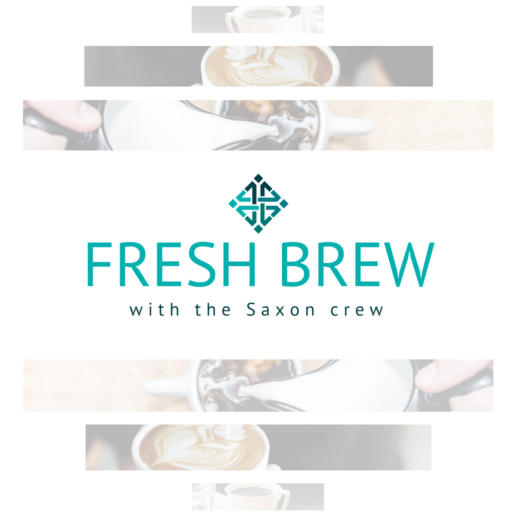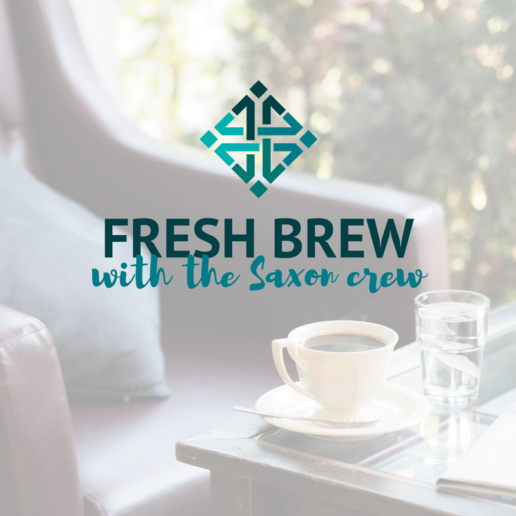Viewpoint: 12 Tips for Return-to-Work Communications
While employers begin to move their employees back into their offices, communication between team members may not be as strong as they were before working remotely. Read this blog post for helpful tips on communicating when returned to work.
While the move to working from home due to the COVID-19 pandemic happened quickly, the return to work will be slower and more complicated.
Employers that haven't made movement back to workspaces and office buildings should think carefully about the implications of the new six-feet-apart world. How will you handle an employee who refuses to wear a mask when required? When will you open the kitchens and make coffee and water available? How many people will you allow in a restroom at a time? Do people have to walk clockwise around the space? Where do you put hand sanitizer stations? Setting aside all of the logistics, how do and will employees feel?
Connect with Employees
Like any other workplace change, making sure employees are aware and understand this new world will be equally as important as the actual changes themselves. Training, education and effective communication are key to returning employees to the workplace.
Below are a number of tips to keep in mind as you communicate return-to-workplace situations:
- Develop a clear and detailed safe work plan, reviewing any policies that need to be updated.
- Write in plain, easy-to-understand language.
- Use images and diagrams where appropriate.
- Outline what building management is doing, how the company is supporting this effort and clear expectations for employees.
- Partner with legal counsel. They can help you steer clear of perceptions of discrimination and other potential employee relations or legal issues.
- Get input from your senior leaders. They should be knowledgeable and included well before you communicate to employees.
- Train your managers and supervisors on the safe workplan and what is expected of them. They are the front line of employee communications.
- Use different media to supplement a written plan. Hold a webinar and record it. Create a video, leverage your online employee portal, or do a podcast.
- Make good use of signs throughout the office to help with key behaviors, including directions to walk down aisles in one direction or to designate one stairwell for walking up and another for walking down.
- Be clear where employees should go with questions.
- Start communicating before workers are allowed (or expected) to return to the workplace, and keep communicating to address new issues and concerns as they arise.
- Explain that the situation is fluid and manage expectations by noting that when new information becomes available the plan will be updated. Communicate those key changes with leadership and employees.
Careful Not to Overdo It
Especially now, employees want to understand what you are doing to keep them safe and to believe that you care. But you don't want to overdo it, either. Whether it's due to a lack of trust or excess worry, some organizations are holding more meetings than usual to "check-in," which employees can find invasive and intrusive.
If "eyes on your employees" was your primary form of performance evaluation, you might be feeling unsettled in this new work-from-home arrangement. In most situations, you've likely hired responsible, talented people who want to, and will, do good jobs under any circumstance. Trust they will, and reward them when they do.
Tip: Let them dictate the check-in frequency. Be willing to tailor your approach to the communication needs of the individuals or groups. Then, over time, survey your employees and ask them how it's working, especially the frequency and content of communications.
Wherever you are along this journey, don't forget employees' needs have shifted and will likely continue to change. Be flexible and willing to adjust your communication approach constantly. Look for that Goldilocks communication approach—not too much, not too little, but just right.
SOURCE: Foster, D. (26 June 2020) "Viewpoint: 12 Tips for Return-to-Work Communications" (Web Blog Post). Retrieved from https://www.shrm.org/resourcesandtools/hr-topics/benefits/pages/12-tips-for-return-to-work-communications.aspx
Best tools to support your remote workforce
The coronavirus pandemic has brought many strains onto the workforce, and some are caused by the fact that employees are now having to work from home. Although working from home can come with benefits, it can also create challenges that weren't noticed before. Read this blog post to learn more.
The remote workplace comes with a lot of benefits — including increased productivity and better focus. But it’s also causing challenges to both employees’ mental and physical well-being.
Disruptions from the coronavirus have infiltrated the daily lives of employees. Everything from proper nutrition to child care and financial concerns are major focus points to many.
Many companies are now stepping up their efforts to adapt their benefit offerings to support employees who work from home. Employers are considering options like work-from-home office policies and stipends, ergonomic workplaces at home or mental health and telemedicine checks.
From virtual fitness memberships and snack boxes to tech tools and online wellness resources, here are some of the best tools employers can provide to support their remote workforce.
Free food at home
While almost everyone is working from home, many employees have lost a popular office perk – free food. That’s why Stadium, a New York City-based group lunch delivery company, introduced a new service in early June where employers can have snacks delivered nationwide to any home office. The service, called SnackMagic, lets employees choose individual snacks and beverages that they like within a gift budget set by the employer.
The coronavirus has also exacerbated the challenge of accessing healthy food and proper nutrition for many across the United States. To address those concerns, meal subscription company Freshly created a new service called Freshly for Business to provide healthy and affordable meals for employees working remotely. The program allows employers to offer free or subsidized meal plans consisting of up to 12 meals per week. Employers including PwC and KPMG, among others, are partnering with Freshly, which costs an average of $8 per meal per employee.
Mindfulness and stress management
As a result of these circumstances, Unplug Meditation, a Los Angeles-based drop-in meditation studio and app, is seeing a surge in corporate programs, and has partnered with companies including Disney, Mattel and Google. The app offers everything from virtual meditation and sound bath sessions, to team building, stress management and customized wellness programs.
Chill Anywhere, a mindfulness and meditation app, is built specifically for the workforce, and provides live mindfulness video practices. It can be offered as an employee benefit or part of an organization's Employee Assistance Program. App users can track their mood before and after each session to see how their mindfulness practice impacts their day-to-day lives.
Financial wellness
As the pandemic sends shockwaves through the U.S. labor market with layoffs, pay cuts and furloughs, employers are making efforts to support the financial security and resiliency of their employees.
SmartPath, a financial counseling platform, launched a free online resource called the Money Moves Quiz to help employees build confidence and a secure financial plan by answering 15 questions about their current situation. The questions cover topics such as levels of emergency savings, home ownership or employment status. Based on the answers, SmartPath will provide a clear financial plan tailored to the employee’s needs.
In March, Alegeus, a consumer-directed healthcare solutions company, introduced a new offering called the Employee Care Card, a debit card that enables employers to offer targeted financial support for employees to address their most immediate needs during the pandemic. Employers determine the amount they wish to contribute per employee, as well as the type of eligible expenses they want to allow — from groceries and home office supplies to educational supplies. Unlike cash or gift cards, employers control how the dollars can be spent, preserve unspent dollars and gain real-time insight into employee spending trends.
As head of an HR tech company and mother of two and CEO from another employee benefits firm, felt the effects of this firsthand. That’s why she decided to offer Outschool.com, an online education platform for children ages 3 to 18, as a benefit to her employees. Outschool offers classes on subjects ranging from life skills, arts and music, to math, coding and science.
Screen Sitters, a virtual child care service connecting sitters with families to entertain children via live 1:1 video, is another service offering overextended working parents some relief. Employers can get flexible packages that integrate into their existing benefits programs. All of the company’s sitters are vetted through a 5-point screening process to ensure safety and a hassle-free transaction for the parents. Children get a personalized experience, as the sitter plans sessions ahead of time based on each child’s personal interests.
This summer, a virtual camp experience is what many facilities and families are choosing to keep their kids safe. Anna Birch, a 23-year summer camp veteran has replaced her usual summer adventure camp programs with an online alternative. The new resource, called The Camp Cloud, provides children ages 6 to 17 with the opportunity to make new friends and engage in guided activities led by institutions like science centers, museums, zoos and aquariums, schools and theaters, without need for significant parental assistance.
Team building
Summer is typically a time when companies plan team outings, parties and activities to give employees an opportunity to bond outside the office. But with COVID-19 taking a toll on group activities, many of those events are now cancelled.
HealthKick, a corporate wellness program, provides a personal well-being hub for companies and their employees to participate from home. From using in-home workout services to taking cooking classes over Skype with meal delivery kits, teams can take advantage of many different activities this summer that they can do together from their new work-from-home offices.
Mental health resources
Employee mental health is a workplace crisis, with many employees experiencing increased anxiety and depression during the pandemic. To address care accessibility issues — including in-person sessions and treatment — imposed by COVID-19, many employers are offering employees access to mental health care online.
Healthstat, a provider of virtual employer-sponsored health centers, is offering a virtual mental health solution, Ment4Me, that helps employers improve access to high quality mental health services for employees who are seeking support for treatable mental health conditions. Ment4Me aims to help reduce the stigma that can often be associated with mental illness. It’s also using artificial intelligence to offer the chatbot “Tess,” a provider of on-demand mental health support.
Mental health benefits provide Happify Health has designed a new program for employees and health plan members to remotely access mental health resources to meet the recent surge in demand. Happify Connect is a part of the organization’s selfcare platform and allows employees to connect with mental health care that is more conducive to the current work-from-home environment. The program directs employees to mental health resources, including self-guided tools within the Happify platform, higher-touch care through integrated partners such as online therapy and a mental health provider directory.
Supportive, a mental wellness support platform, offers 24/7 chat-based peer support on any emotional well-being topic ranging from depression, anxiety and loneliness to daily life struggles like parenting, relationship conflicts or stress and burnout. Users answer the question "what's your struggle?" for Supportiv to analyze and auto-match them to a small group of peers who relate. Each group has a live moderator to guide the chat, make sure each user's needs are met, and vet the personalized resources that appear as hyperlinks in real-time. It can be deployed as a dedicated web link, integrated into an EAP, or embedded as a chat window that appears on any existing benefits portal.
Physical well-being
With gym closures disrupting wellness benefit offerings as well as employees’ workout routines, employers are now looking to virtual solutions.
Earlier this spring, Virgin Pulse, a global provider of digital wellness and wellbeing solutions, launched a dedicated COVID-19 hub to provide employees with resources — ranging from webinars to blog posts — on fitness and nutrition. It aims to help employees build and maintain healthy routines by reducing stress, staying active, being productive, eating healthy and sleeping well. The hub is a resource app for Virgin Pulse users, but also gives free access to health and wellbeing content, programs and resources.
BurnAlong is an online video health and wellness platform where employees can take classes from a network of hundreds of instructors across 45 categories ranging from cardio and yoga to stress, chronic conditions and diabetes. They can take classes alone, or invite friends and colleagues to join them live online for social motivation. The platform, which is used by companies, hospitals, insurers and brokers, is partnered with on-site and local gyms, studios, instructors and wellness professionals to help people achieve their health and wellness goals.
An ergonomic workplace
With employees using everything from their kitchen table to their couch as their workplace, working from home sometimes brings bad ergonomic habits and solutions.
Bad ergonomic habits, if left unaddressed, could mean higher healthcare costs for the employer, lower productivity and the increased potential for an employee to sustain a medical condition.
To be mindful of employees’ who don't work out of an office too, some employers are reimbursing them for remote office furniture.
Livongo, a digital health services company, is offering its remote workers reimbursement for ergonomic and job essential furniture. With the whole company being remote during the pandemic, the office furniture reimbursement benefit was extended to all employees to help make their home offices more efficient. Even before the pandemic, Livongo had a strong remote workforce with more than 1/3 of its employees working remotely. The company says taking the time to set up a workplace that is safe, comfortable and limited from distractions is important for employees to help manage their time and well-being.
SOURCE: Nedlund, E. (19 June 2020) "Best tools to support your remote workforce" (Web Blog Post). Retrieved from https://www.employeebenefitadviser.com/list/best-tools-to-support-your-remote-workforce
Remote Workers Experiencing Burnout
With many employees working remotely, productivity may decrease and the feeling of being burnt out may increase. As working remotely continues to draw out through many months, many employees may continue to feel this way, as well. Read this blog post to learn more.
Recent polling shows a significant share of the U.S. workforce is feeling burned out after more than two months of working from home during the coronavirus outbreak.
About half of 1,251 respondents in a survey conducted in May by job-search and careers website Monster said they were experiencing burnout. Even before COVID-19 upended workers' lives, the World Health Organization had classified burnout as an "occupational phenomenon" and a hazard.
"The COVID-19 pandemic has changed how we work, where we work, resulted in clashes between our work and home lives like we've never had before, and really has become a big stressor," said Melissa Jezior, president and CEO of Eagle Hill Consulting, a Washington, D.C.-based management consulting firm.
Binita Amin, a clinical psychologist in Washington, D.C., warned that the dangers of burnout are typically greater than just feeling stressed. "Stress is something that is resolved and has some sort of closure, and with burnout there's no real end in sight, so it's significant and chronic in nature," she said. "What happens over time is you start to see that a person's mental, physical and emotional resources are exhausted and depleted. In the work context, you can see it in terms of decreased productivity, difficulty concentrating, and certainly feelings of disillusionment or cynicism."
In a survey of 1,000 workers polled by Eagle Hill in April, 50 percent said they feel less connected to colleagues, 45 percent feel less productive, and 36 percent feel less positive about their careers.
The particular stressors brought on by COVID-19 include overworking and adapting to new ways of working; caring for children in the absence of school or day care; job insecurity; health concerns; isolation; and the lack of clear boundaries between work and home, said Vicki Salemi, a careers expert for Monster based in New York City. "People have also lost many of the ways they used to manage stress, such as spending time with friends, going to concerts and sporting events, and going to the gym," she said.
The Monster poll did find that almost three-quarters of respondents (71 percent) are making an effort to take time for themselves during the workday, such as taking a break or going for a walk. But over half of respondents (52 percent) said they are not planning to take extended time off or vacation despite facing burnout.
Salemi said that people may be reluctant to book a vacation because of financial reasons, the fear of being perceived as not being productive, or concerns about public safety. "Some people are just not ready to go to the beach, while other destinations, like amusement parks, are not really open for business," she said.
"Even if you're not going anywhere, you earned PTO [paid time off], and you should take it," she encouraged. "Using PTO doesn't necessarily mean you have to get on an airplane and fly away somewhere. It can mean taking a staycation. Perhaps people are thinking, 'Well, I'm already home, and I don't need a staycation,' but the reality is that we all need to log off."
She said there are ways to creatively take PTO, such as taking off every Monday or Friday in the month of July, for example.
Employers' Role
Employers can play a big part in helping address burnout among their employees, experts said. Affinity groups and employee assistance programs should be promoted as helpful resources, but there's even more that managers can do, according to Amin. "There's real opportunity to empower your employees to feel more sense of control over things like schedules, workload and types of work assignments, and even influencing things like meaningful connection," she said.
Lack of control is a prime factor of burnout, Jezior said. "Right now, there is a lot outside of our control. But I think one way we can help ground employees is to give them the autonomy and the ownership over how and when they complete their work."
Salemi recommended getting feedback from employees about their workload and work-from-home processes to make sure expectations are aligned and they feel supported. She stressed that managers and leadership should lead by example and encourage employees to take advantage of flexible work options.
"Make an announcement to the team or the organization that it's OK to take time off, even without having someplace to travel to," she said. "Encourage them to take time off."
SOURCE; Maurer, R. (29 May 2020) "Remote Workers Experiencing Burnout" (Web Blog Post). Retrieved from https://www.shrm.org/hr-today/news/hr-news/pages/remote-workers-experiencing-burnout.aspx
5 Ways to Demonstrate Your Value — Remotely
When working remotely for an extended amount of time, many employees can feel as if they are not visible to the organization. Read this blog post for helpful tips on how to show value, while working remotely.
With unemployment levels at the highest since the Great Depression, many individuals don’t have the privilege of working, and those who do feel nervous about how long they’ll have that opportunity.
If you fall into the latter category, I can appreciate your very legitimate concern. Many companies are struggling to bring in revenue, let alone turn a profit. And with remote working arrangements, you don’t have the visibility with your colleagues and managers that you normally would. When you were in the office, you might have had informal interactions with these individuals multiple times a day. Now, if you don’t have a meeting on their calendar, you may wonder if they remember your presence — and more importantly, your importance to the organization.
I can’t guarantee that your position is secure, and there will certainly be factors outside your control. But there are ways that you can make yourself and your accomplishments more visible to your organization, even when you’re not in the same building. The following suggestions are five concrete steps that you can focus on right here, right now, to increase your odds of thriving in your job during this tumultuous time and demonstrating your value while working remotely.
Do Your Work
Getting your work done is always a good idea. But especially in times where businesses and organizations are having to make hard decisions about who to keep, doing your work — and doing your work well — is essential.
As a time management coach, I’ve been working with clients throughout this time of uncertainty. (Thankfully, I was already remote!) And the sense I am getting is that there was a grace period in March and part of April as individuals were adjusting to working from home. Managers were more forgiving if there was a dip in productivity or missteps here and there. But now that it’s been multiple months of remote work, higher standards of output are returning. If you haven’t done so already, put a system in place for keeping track of your tasks and ticking them off, even if your schedule is modified because you have other responsibilities at home.
Tell Others
I don’t recommend that you give yourself a shout out at every single meeting, and I definitely don’t advise that you take undue credit for others’ work. But if you have accomplished something significant, share it. That could look like covering a few highlights of your work with your boss each week, either in your one-on-one or through email. Or speaking up in a meeting to share about what your team is doing. Or even giving a presentation on some best practices that could help other colleagues in a similar role. Focus on not only what you did but how it produced positive results for your organization. This is not bragging but simply informing others about how, even though they might not see you working, you’re getting great things accomplished. And this gives you increased visibility across the organization as people understand the role that you fill and the value you add.
Help Your Boss
Although you don’t want to overload yourself with extra work to the extent that you burn out or can’t keep your commitments, look for ways to make your boss’s life easier. For instance, turn in your work early so your manager has extra time to review it before a meeting, or be extra prepared in your one-on-one meetings so they are as concise and effective as possible. These little things help reduce the pressure on your boss, so they are not worried about whether you’ll deliver and if you’re on top of your work. And if you have extra capacity, offer to help with extra assignments or take work completely off of your manager’s plate. This shows that you’re not only someone who gets their work done but also someone who takes initiative. Although your immediate supervisor doesn’t always have a say in layoff decisions, if they do, they’ll put in a good word for you if you’re making things easier for them.
Play Nicely
With my clients, one of their least favorite ways to spend their time is in brokering arguments between people on their team. It drains energy, and they generally consider it a waste of time.
Spread Positivity
One very unfortunate outcome of this season is that it’s brought out some very anti-social behavior in people. Many people’s response to their own fear is controlling others. I’ve seen more vicious online behavior and more people yelling at strangers in public in the last two months than I’ve seen in my entire life. And since the biggest subject on most people’s minds and on all media coverage is Covid-19 — an anxiety-producing topic for most — the air has been tainted with the stench of negativity.
As a bonus, if you can be humorous, do so. Laughter and positive energy draw teams together and make people feel good about being around you. While doing good work and being a positive presence doesn’t guarantee your position will make the cut as you face layoffs, it does increase your odds because you’re demonstrating your value to the organization and the people around you.
Much of what happens with the job market and your particular job will be out of your hands. You can’t control what businesses are considered essential or not, nor can you control organizational changes and headcount. And there are many factors in place that determine the market demand for your work. However, if you follow the five pieces of advice above, you will do what you can to make the most impact and get credit for it within your current role. And you’ll make a positive impression in the process.
SOURCE: Saunders, E. (01 June 2020) "5 Ways to Demonstrate Your Value — Remotely" (Web Blog Post). Retrieved from https://hbr.org/2020/06/5-ways-to-demonstrate-your-value-remotely
Fresh Brew With Lexi Kofron
Welcome to our brand new segment, Fresh Brew, where we will be exploring the delicious coffees, teas, and snacks of some of our employees! You can look forward to our Fresh Brew blog post on the first Friday of every month.
“Stay calm and collected on phone calls, and stay organized!”
Lexi is a Client Service Specialist at Saxon Financial Services.
Lexi has been at Saxon since 2015 when she worked here as an assistant while completing her high school education. Lexi left Saxon to pursue her education full time and after graduating from Ohio Connections Academy, and has proudly returned to Saxon as a Client Services Specialist and is responsible for assisting clients.


Cinnamon Dolce Latte
Lexi’s favorite fresh brew is Cinnamon Dolce Latte from Starbucks!

Pretzels and Hummus
Lexi’s favorite snack is Pretzels and Hummus!
Employees clock in more downtime when working from home
Did you know: since many employees have started working remotely due to the coronavirus, there has been an average of two hours of downtime, a day. Read this blog post to learn more.
Since stay-at-home and shutdown orders were enforced amid the coronavirus fallout, hundreds of businesses in the U.S. have turned to working from home to reduce exposure. But as the remote workforce expands, employers and employees have been faced with a new set of challenges — one of them being more downtime.
Remote employees average two hours of downtime per day, which is 20 minutes more per day than on-site employees, according to a new Paychex study, where 1,000 remote and on-site employees were surveyed about their daily downtime at work.
The transition to remote work has been beneficial to some workers, who have reported increased productivity due to fewer in-office distractions. When asked about the biggest reasons they decided to work remotely, 79% of remote workers responded with increased productivity and better focus, according to a study by Owl Labs, a video conferencing technology company.
But other employees may be negatively affected due to supervisors being unable to physically monitor downtime, says Joey Morris, a project manager at Paychex.
“The two most popular reasons for downtime were that employees completed work too quickly and that the availability of work was inconsistent,” Morris says. “Interestingly, nearly one in three employees said they chose to make downtime during their workday, making this the third most popular reason.”
The study found three hours of down time a day was considered too much, leading to boredom and other negative effects. Workers are more likely to leave a job due to excessive downtime than to be terminated for it, Morris says.
“This kind of excessive downtime was related to lower rates of job satisfaction, salary satisfaction, and employee retention,” he says. “More than one in 10 employees said too much downtime was responsible for leaving or being let go from a position.”
However, downtime can have some benefits, too. Thirty one percent of employees said they chose to make downtime during the day, and 23% said their work wasn’t urgent. Thirteen percent said they could ask for more work, but chose not to.
Taking breaks at work is important to make employees feel more engaged and productive, according to a survey from Tork, as North American workers who take a lunch break every day scored higher on a wide range of engagement metrics, including job satisfaction, efficiency, and likelihood to recommend their company to others.
The top ways in which employees spend their downtime at work are browsing the internet, socializing with co-workers, texting or messaging, eating food and browsing social media, according to the Paychex study.
While employers may want to reduce downtime and increase employee efficiency, results from the study indicate it is important to maintain a balance, Morris says. Having too little downtime was nearly as bad for employee satisfaction as having too much.
“Efficient management of employee time is not only important to a business' bottom line, but it is also important to employee satisfaction,” he says. ”Employees want to feel engaged when they come to work and there is an understanding that stagnation in any position can negatively influence one's career trajectory.”
SOURCE: Nedlund, E. (1 May 2020) "Employees clock in more downtime when working from home" (Web Blog Post). Retrieved from https://www.employeebenefitadviser.com/news/employees-clock-in-more-downtime-when-working-from-home
Strategies for making layoffs a last resort during a crisis
Did you know: 6.6 million Americans have applied for unemployment due to the coronavirus pandemic. Many businesses are looking for other alternatives than automatically laying off their employees. Read this blog post to learn more.
In uncertain times business leaders can be faced with an impossible choice, keep every employee or keep their business afloat.
More than 6.6 million Americans have applied for unemployment, according to the Labor Department and there have been over 10 million jobless claims, as a result of the coronavirus pandemic keeping people in their homes and out of work. It is likely that businesses will make further cuts as the latest PwC survey suggests 44% of CFOs expect furloughs and 16% expect layoffs.
The unfortunate reality for many small businesses is that there typically isn’t an alternative to layoffs, but larger organizations have more options.
“There are several firms in the U.S. right now, including our own, that have publicly said layoffs are a last resort,” says Bhushan Sethi, PwC’s global people and organization leader. “What they are looking to do is be creative with the different levers you can pull around the workforce.”
Sethi in a recent interview shared ways in which employers can make layoffs a last resort in times of unpredictability.
How can businesses avoid layoffs during a crisis?
There’s looking at compressed work schedules, reducing costs in other areas, including real estate or business travel. There are other benefits employers may be offering that are not relevant like a car allowance or a travel allowance. Even before COVID-19 we’ve seen clients take a look at a compressed work schedule. Employers need to understand what it means if they offer a compressed work week, whether it is 40 hours across four days or in some areas it might mean one week on, one week off. So the compressed work weeks can take on different forms. Changing the pay would be next, and looking at the areas of your firm that have significant costs and looking at where value is created. What that could mean is changing the mix of pay at the executive level. Certain companies have come out and froze or capped executive pay or said executives won’t take bonuses. So there’s different levers on the compressed work schedules and on the pay models and then there are other kinds of cost control measures you can take.
How are employers designing benefits during this time?
In our CFO survey we saw that 56% of them were also looking at other benefits, specifically things like paid time off and sick leave. A number of them are saying “how do I design benefits around what my people want?” At PwC we said we’re going to give an emergency child care allowance to people who need it for $2,200. We’re seeing this shift around what you can offer your employees from a benefits perspective that might be very relevant to them. I’ve seen other clients say “well if there is a small piece of equipment that will help you with remote working like investing in a different shaped chair or something like that,” it seems trivial but it's really important to people’s experience right now.
How can employers reassure their remaining staff when they have to make staffing cuts?
It’s still an opportunity for firms to start planning beyond just today’s business. You’ve got to project out maybe 12 months and say what will my revenue and my profitability be, based on some assumptions being made around the business. The more you can get employers to actually think about kind of financial impact then you can walk it back and say okay, I‘ve got to ask about the costs I need to manage and how can I be creative by not just looking at payroll and salary and benefits, but how can I think about other levers I can pull? Can I offer sabbaticals to people? Can I do compressed schedules? Can there be job sharing in certain key rolls? Looking at all the different levers around it is going to be important because then you may actually get to a decision that is more beneficial for your employees, for society, and your business because you won’t be in the process of having to lay off a significant amount of people and cause reputational damage to the business.
SOURCE; Shiavo, A. (13 April 2020) "Strategies for making layoffs a last resort during a crisis" (Web Blog Post). Retrieved from https://www.employeebenefitadviser.com/news/strategies-for-making-layoffs-a-last-resort-during-a-crisis
Fresh Brew With Olivia Childs
Welcome to our brand new segment, Fresh Brew, where we will be exploring the delicious coffees, teas, and snacks of some of our employees! You can look forward to our Fresh Brew blog post on the first Friday of every month.
“Be sure to do the follow-up after a conversation! Clients want to know they are understood and have options.”
Olivia Childs is a Senior Solutions Specialist.
New to the insurance industry, Olivia hopes to expand her knowledge in Medicare Insurance. She graduated from the University of Cincinnati with a degree in Organizational Leadership. She was involved in the Human Resources department and a member of HR Succeeds, a mentor program with professionals and students.
Olivia has been volunteering her free time at the Cincinnati Epilepsy Foundation since High School and her favorite catchphrase is, “We rise by lifting others,” by Eleanor Roosevelt.
Olivia will marry her fiance, Cory, in June 2020. They enjoy hiking and cycling together, as well as have two cats, Braun & Gus.


Chia Tea Latte
Olivia loves to drink her favorite brew, Chai Tea Latte, while at Half Day Cafe!

Everything Bagel
Olivia loves sipping on her favorite brew, a Chai Tea Latte, while snacking on an Everything Bagel!
Fresh Brew With Jake Meyer
Welcome to our monthly segment, Fresh Brew, where we will be exploring the delicious coffees, teas, and snacks of some of our employees! You can look forward to our Fresh Brew blog post on the first Friday of every month.
“Educate your employees about their benefits. The more they understand them, the more they will realize how big of a benefit they are.”
Jake Meyer is an Account Executive at Saxon Financial Services
Jake Meyer joined the Account Management team in December 2015 after previously working in operations for the Cincinnati Reds. He holds a B.A. Cum Laude in English Writing and Political Science, from the University of Pittsburgh.
Outside of the office, Jake enjoys spending time with his family and friends. He is an avid sports fan, and likes to attend sporting events as often as possible.


Rhinegeist Truth
Jake enjoys drinking Rhinegeist Truth which is a local Indian Pale Ale from the Rhinegeist Brewery in Cincinnati, Ohio.

Jake doesn’t have a particular favorite snack that he eats when sipping on his favorite brew. He instead likes to enjoy the hops in his favorite IPA.
How to Manage Intergenerational Conflict in the Workplace
With there being at least four generations working together in the workplace, there can be multiple multi-generational conflicts that come into fruition. Although the success of a company should be the common goal for the workforce, it can be difficult to manage the conflict between each of the generations that are a part of the same organization. Read this blog post to learn about how to handle conflicts between multiple generations in the workplace.
When Brian Formato began working as an HR manager for Golden Books, the editorial staffers of the now-defunct publisher of children's books were mostly in their late 50s or early 60s and had been with the company for 25 years or longer.
After the company was purchased, it added more than 200 new jobs in one year, with most new hires being recent college grads. The new generation of employees brought fresh ideas but were also far more focused on immediate gratification than long-term success, Formato said. As a result, many veteran employees took early retirement because they couldn't stand by and watch the company they had devoted their careers to change so drastically overnight.
"What was left was a group of high-energy amateurs that lacked the industry knowledge, as well as the discipline, to negotiate attractive deals with the writers," Formato said. Revenues soon fell. "After more than 50 years in business, the company was forced into bankruptcy."
While this may sound like a typical clash between Millennials and Baby Boomers, it's noteworthy that this happened before Millennials were in the workforce and when most Boomers were in their 40s. However, it does highlight the perennial clash that occurs—in every generation—between newcomers with fresh perspectives and more-experienced elders.
There are at least four generations now in the workplace: Baby Boomers, Generation X, Millennials and Generation Z. Managing a multigenerational workforce with so many different perspectives, experiences, values and goals poses a unique organizational challenge for company leaders, managers and HR professionals. However, "generational differences" aren't always the real issue.
"Companies invest millions of dollars in training and development because of their beliefs about generational differences," said Jennifer C. Deal, a senior research scientist at the Center for Creative Leadership in Greensboro, N.C., and co-author of What Millennials Want from Work: How to Maximize Engagement in Today's Workforce (McGraw-Hill Education, 2015). "They do it because they believe it's true, even though the evidence doesn't support those beliefs."
Deal believes that life stage and position are better predictors of behavior than the generation a person was born into. "Most intergenerational conflicts are fundamentally about power or clout," she said. "A young person who wants more clout wants to be noticed. They have new ideas that aren't being listened to. An older person wants their experience to be recognized and appreciated. Everyone wants to be heard and respected."
We need to be careful about generational research because it puts people in a box, said Val Grubb, author of Clash of the Generations: Managing the New Workplace Reality (Wiley, 2016) and CEO of Val Grubb and Associates in New Orleans. "The key to understanding someone's behavior is to look at the individual, and the best way to find out how to motivate and engage is to ask them what matters to them."
Establishing Norms for Working Together
Haydn Shaw still finds value in traditional generational research, as long as it does not lead to stereotyping.
"Statistical generalizations are an aid to conversation, not a substitute for it. When it comes to understanding another person, nothing replaces conversation," said Shaw, author of Sticking Points: How to Get 4 Generations Working Together in the 12 Places They Come Apart (Tyndale Momentum, 2013). "The greatest fear in my work is that people will try to shortcut by using the categories rather than the conversations."
To stimulate productive conversations, Shaw has identified numerous "sticking points" where generational differences tend to emerge, particularly around the use of technology, communication, feedback, time management, work/life balance and organizational structure. Managers need to start conversations at those points so they can better understand the situation.
In Tammy Erickson's experience, misunderstandings about time and place are common among team members from different generations.
"Older generations tend to be more linear and traditional, while younger generations are looser and more spontaneous around time and place," said Erickson, CEO of Boston-based consulting firm Tammy Erickson Associates. To resolve those differences, she recommends that managers determine which norms work best for the team based on collective preferences and the work that needs to be accomplished.
Preferences around the use of technology is another potential sticking point. Generally, older employees tend to prefer e-mail, while younger employees prefer texting. While preferences matter, experts say the needs and goals of the team as a whole should take priority over any individual preference.
According to research conducted by Kathryn Bartol, a professor of leadership and innovation at the University of Maryland, College Park, communication among team members improves significantly when teams match the technology to the task. While text-based media is generally more useful for sharing daily information, for example, video chats and telephone conversations are better for brainstorming, problem-solving and relationship-building.
Shaw has developed a five-part process to help resolve these differences:
- Acknowledge. Talk about generational differences. "You can't solve a problem if you don't acknowledge it exists."
- Appreciate. Focus on the "why," not the "what," and the common needs. "The 'what' divides us. The 'why' is a uniter."
- Flex. Agree on how to accommodate different approaches.
- Leverage. Maximize the strengths of each generation. For example, if an organization decides to use the messaging platform Slack as a communication tool, there will inevitably be people who are uncomfortable with a technology they don't recognize or understand. A manager or leader can recruit an older team member who is comfortable and experienced in using this technology to coach, train and mentor the novice Slack users.
- Resolve. Determine which option will yield the best results if flexing isn't enough.
Dismantling Stereotypes One Relationship at a Time
"Stereotyping is a symptom of discrimination. It's important to treat people equally but not necessarily the same," Formato said. "Self-awareness is the key to effectively managing generational differences. Managers must be in touch with their own beliefs, values and work attitudes and understand that these may be different from the people they manage."
Managers and leaders need that self-awareness to make sure their own biases are not skewing how work is distributed. "Subtle things that leaders do can undercut respect for diversity of age," Grub said. "Who do you give plum assignments to? Do you automatically assign younger employees to technology because you assume older employees can't handle it? These biases stifle enthusiasm and innovation."
In an Addison Group study of 1,000 workers representing multiple generations, 90 percent reported satisfaction with the diversity of age ranges in their workplace. However, the study also found that 35 percent feel their company's culture and processes favor one generation over others. Forty-five percent of respondents feel their employers are biased toward Millennials.
Rather than prefer one generation over another, organizations need to develop and recognize the unique value of each individual, as well as the synergy that can be created between people with different experiences and perspectives.
Formato encourages companies to use appreciative inquiry to advance that goal. Appreciative inquiry focuses on strengths rather than weaknesses by recognizing that people with different perspectives and experiences and at different life stages are all able to work collaboratively.
The leader can also help team members build positive relationships by encouraging them to get to know each other better. Volunteer programs often promote this kind of camaraderie, as do team-building exercises.
Formato uses Patrick Lencioni's personal histories activity to help team members build trust and find common ground. Each person on a team prepares a slide with photos and answers these three questions:
- Where did you grow up?
- How many siblings do you have, and where do you fall in that order?
- Describe a unique or interesting challenge or experience that shaped who you are.
"This activity always brings a team closer together," Formato said. "People find common experiences, and they get to know the whole person."
This can happen spontaneously as well. When the president of a small New York City foundation asked his employees to share stories about their sports activities in high school, he was delighted to learn that there was a high school fencer on his team. What he didn't anticipate is how the younger women (most of whom were administrative staff) would end up bonding with a much older female executive when she lamented how, in a pre-Title IX era, there weren't a lot of sports teams for women. This led to an equally interesting conversation about life lessons learned through team sports and other team activities.
Although the president started the conversation as an icebreaker, he opened the door to a deeper discussion about what it means to be a member of a team and how each person's personal history informs his or her participation as a team member.
Uniting Around a Common Purpose
When team members rally around a common vision, purpose or goal, there is often a greater sense of unity that, in turn, translates into a better customer experience.
When Formato first began working with a small software-as-a-service company in Santa Clara, Calif., the CEO and senior leadership wanted him to help the team become more closely aligned. One of his first efforts to do so was to ask the team, "What does this company do better, special or different?"
The answers were not well-aligned. After diving deeper into their successes, they discovered that while the software solution was important, what they were really selling was their knowledge and ability to manage relationships.
"They build trust with their clients and are truly focused on customer success," Formato said. He describes this as their "groove" and emphasizes that, as they scale, they must keep their focus on the customer experience. It's a reminder that, as the company continues to grow, customer retention will still be as important as new-customer acquisition.
Although each member of the team has personal strengths, weaknesses and preferences, what unites them all is striving toward a common purpose and set of goals.
"It's up to the leader to make sure they are leveraging their strengths and working together as a team," Formato said.
SOURCE: Hirsch, A. (05 February 2020) "How to Manage Intergenerational Conflict in the Workplace" (Web Blog Post). Retrieved from https://www.shrm.org/ResourcesAndTools/hr-topics/employee-relations/Pages/How-to-Manage-Intergenerational-Conflict-in-the-Workplace.aspx












